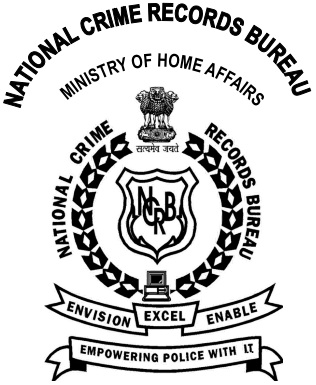2022 NCRB Report Released
The National Crime Records Bureau (NCRB) annually releases comprehensive reports on crime in India, offering insights into various offenses and trends. Let’s explore how the data for NCRB reports are compiled, key takeaways from the 2022 report, and some nuances associated with interpreting the data.
Compilation of NCRB Reports
The NCRB, established in 1986, is mandated to compile and maintain records of crime data in India. It serves as a national repository for fingerprint records and assists in locating interstate criminals through fingerprint searches. The flagship annual Crime in India reports gather information from police forces across states, Union Territories, and major cities. Data is entered at the local police station, validated at district and state levels, and finally by the NCRB.
Highlights from the 2022 NCRB Report
- Overall Crime Statistics: In 2022, India reported a total of 58,24,946 cognizable crimes, comprising 35,61,379 Indian Penal Code (IPC) crimes and 22,63,567 Special & Local Laws (SLL) crimes. This represented a 4.5% decline in the registration of cases compared to 2021.
- Crime Rate: The crime rate, indicating crimes registered per lakh population, decreased from 445.9 in 2021 to 422.2 in 2022, offering a more nuanced view than absolute numbers.
- Crimes Against Women: There was a 4% increase in crimes against women, with 4,45,256 cases registered. The majority of crimes fell under categories such as ‘Cruelty by Husband or His Relatives’ (31.4%) and ‘Kidnapping & Abduction of Women’ (19.2%).
- Cyber Crimes: Reporting of cyber crimes surged by 24.4%, reaching 65,893 cases. Fraud accounted for 64.8% of registered cases, followed by extortion (5.5%) and sexual exploitation (5.2%).
- Suicides: The report noted a 4.2% increase in reported suicides in 2022 (1,70,924 suicides). ‘Family Problems,’ ‘Marriage Related Problems,’ and ‘Illness’ constituted 54.9% of total suicides.
State-wise Data Trends
The states/UTs reporting the highest chargesheeting rates under IPC crimes were Kerala (96.0%), Puducherry (91.3%), and West Bengal (90.6%). However, it’s essential to note that chargesheeting rates don’t necessarily indicate higher crime prevalence but rather effective legal proceedings.
Interpreting NCRB Data
- Recorded Crime vs. Actual Occurrence: NCRB data record registered crimes, not the actual occurrence of crime. Increased reporting, driven by awareness or policy changes, can contribute to perceived crime spikes.
- Principal Offence Rule: The NCRB follows the ‘Principal Offence Rule,’ considering the crime with the most severe punishment in a single FIR. This may result in undercounting certain offenses.
- Data Limitations: Inefficiencies or gaps at the local level impact data accuracy. Factors like fear of uncooperative responses and police shortages can influence reporting.
- Socio-economic Factors: The report may not capture socio-economic causative factors of crimes, and certain groups may hesitate to report cases due to various reasons.
Month: Current Affairs - December, 2023
Category: India Nation & States Current Affairs • Reports & Indexes Current Affairs








